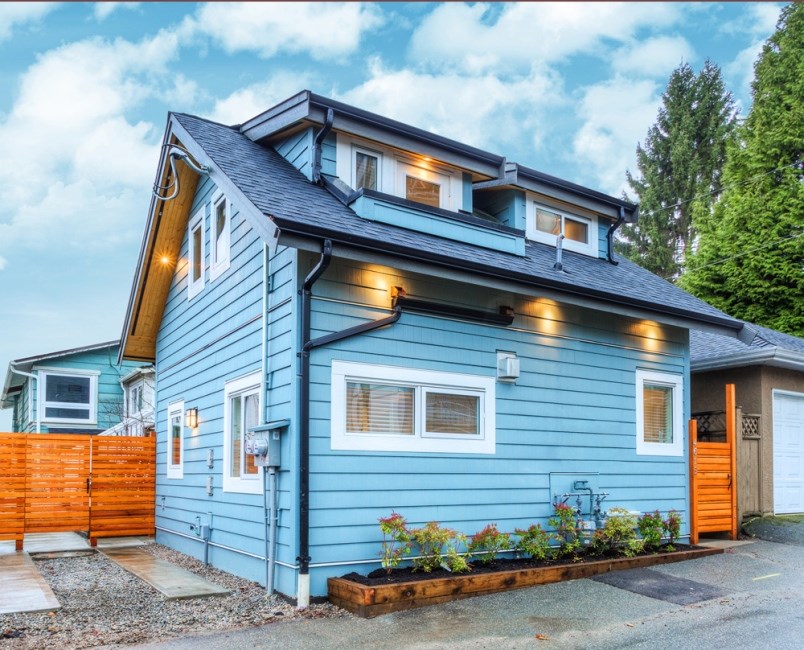Burnaby council has given the greenlight on developing a process that will lead to allowing residents to add laneway houses on their properties.
But some local residents are pushing back on the idea.
Council has approved a process to develop regulations and guidelines for new housing models in the city – a process that will include public consultation.
Some residents have been writing into the NOW opposing the idea, and now others are writing directly to the City of Burnaby to express this unhappiness with the idea.
“I have been working for a neighbouring municipality for 15 years,” wrote Fan Jin in a letter to the city. “Laneway houses were introduced there five years ago. With only about less than 2% of allowed laneway houses being built, the negative impacts to livable single-family neighbourhoods have already started to emerge. As a matter of fact, many newly built single-family houses in Burnaby have two rental units. If all allowed laneway houses are built, it is certain that Burnaby’s livable single-family neighbourhoods will be ruined as a result. We understand that the Council received the Burnaby Housing Needs Report, which identified a need for more rental housing and more housing choices for those ‘seeking ground-oriented housing in walkable, residential neighbourhoods.’ Please consider that: (1) A need for more rental housing can be met by providing more market rental housing and non-market rental housing. The city could develop strategies and policies that guarantee supply at SkyTrain stations with high density. There are a lot of under-utilized developable lands at any of the 11 SkyTrain stations in Burnaby; and (2) Having more housing choices for those ‘seeking ground-oriented housing in walkable, residential neighbourhoods’ does not necessarily lead to building laneway houses. Duplexes and row homes on the street front should be considered. People prefer living on the street front rather than living in the back lane with no sidewalks, street lighting, poor pavement and walking on the narrow laneway sharing with vehicles. Building triplexes, fourplexes, sixplexes, courtyard clusters and townhomes on a single-family lot doesn’t provide ground-oriented units for all.”
But others have written in to support the idea.
“I appreciate the desire to hear from the community to understand how people would like to see housing accommodated in the neighbourhoods in which they reside,” wrote L. Fryett Jerke. “However, I caution you to consider that people like myself who have young children and come from a household with two working parents are often very busy and not represented as well in public consultation events as other demographics who have the time to participate. Young families like mine are also less likely to live in single detached residential neighbourhoods due to a lack of options. If you allow neighbourhoods to decide if new housing should be permitted, then you are excluding the people who these policies will impact the most – people who are seeking to access adequate housing for their family needs, and in neighbourhoods where their children can be safe playing outside.”
The city’s process on the issue will focus on several concepts:
- laneway homes in single family areas;
- additional accessory dwellings in single family homes without a laneway home;
- two suites in semi-detached homes or fourplexes in duplex zoned lots;
- staff explore the affordability aspect of allowing increased densification in single- and two-family zoned areas.
The plan stems from council’s adoption of a strategy called HOME: Burnaby's Housing and Homelessness Strategy, a 10-year “action plan” for housing in Bumaby that includes implementing a program to introduce more infill housing choices in the city.
A year ago, council received the Burnaby Housing Needs Report, which identified a need for more rental housing and more housing choices for those “seeking ground-oriented housing in walkable, residential neighbourhoods.”
“Housing Choices is a multi-phased, multi-year program to introduce new housing forms to Bumaby's neighbourhoods,” says the city report. “It will focus on missing middle housing, which includes duplexes, triplexes, fourplexes, sixplexes, courtyard clusters, rowhomes, townhomes and low-rise apartments, and will also introduce accessory units such as flex suites, secondary suites and laneway homes.”


